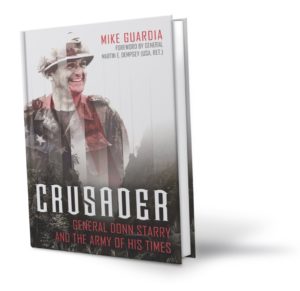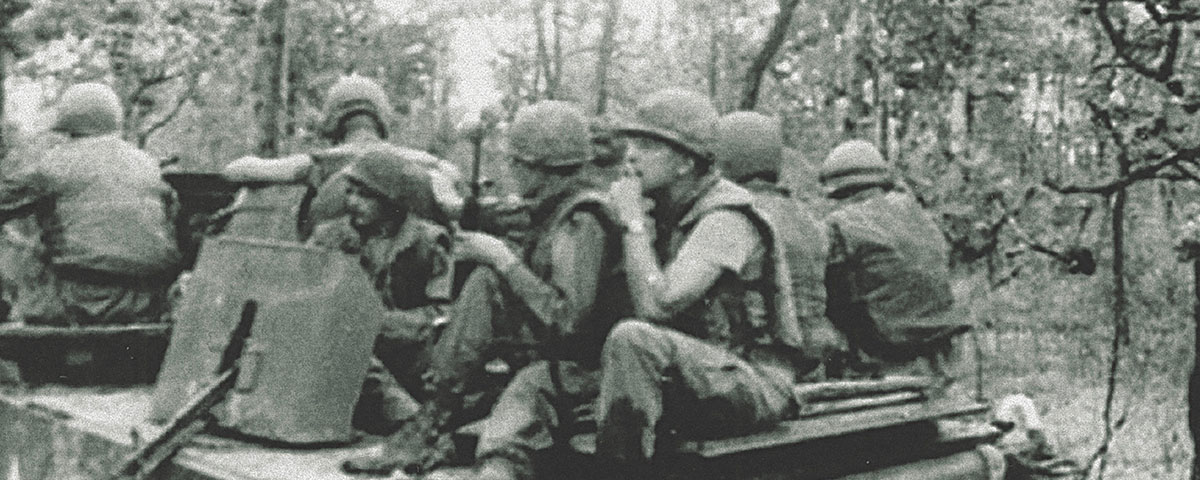
Former U.S. Army armor officer Mike Guardia has made the most of his second career as an insightful military biographer. The talented author of a 2013 book about Vietnam War battalion commander Hal Moore, subtitled A Soldier Once…and Always, has often focused his considerable research and writing skills on Army leaders unfairly overlooked, including World War II special operations heroes Russell W. Volckmann (American Guerrilla, 2010) and Donald D. Blackburn (Shadow Commander, 2012). Now Guardia has provided a much-needed biography of Gen. Donn A. Starry, one of the Army’s most influential “agents of change” in the second half of the 20th century.
Born in New York City on May 31, 1925, Starry was the only son of Don Albert Starry, who spelled the boy’s name “Donn,” so he wouldn’t be a “junior.” Starry enlisted as a private in 1943 and soon won an appointment to West Point, graduating in the Class of 1948 and commissioned to serve in the armor branch—tanks and mechanized fighting vehicles.
Starry experienced the Vietnam War as a headquarters staff officer with Military Assistance Command, Vietnam (1966-67) and as an armor unit commander (1969-70). After his first tour, he perceptively concluded that “successful counterinsurgency operations would require a wider spectrum of skills and training—economic, political, and social as well as military—and would require new doctrine.”
His “new doctrine” included a much-increased, more widespread use of armor units in Vietnam. That recommendation was not merely the parochial view of a career armor officer. For half of Starry’s first Vietnam tour he had served on Maj. Gen. Arthur L. West’s study group investigating the practicalities of using armor in South Vietnam’s much-varied terrain. Contrary to the views of some senior commanders dismissive of tank units, Starry’s exhaustively detailed “terrain trafficability” studies revealed that nearly all of South Vietnam was suitable for tank and armored personnel carrier operations, except during short periods of monsoon weather.
He explained, “The mythology came into being that Vietnam was just a swampland and had a monsoon climate and was not suitable for much of anything except dismounted infantry…That was not the case at all.” Due in large part to his efforts, tanks and APCs “emerged as powerful, flexible and essential battle forces” throughout the remainder of the conflict, Starry noted in a book on mounted combat written after the war.
In 1969, during his second tour, Starry showed he was right about armored units while commanding the 11th “Blackhorse” Armored Cavalry Regiment—“the most exhilarating command of his career.” His most significant armored combat operation was the successful April-July 1970 incursion into Cambodia to strike the “privileged sanctuaries” sheltering the North Vietnamese Army and Viet Cong.
Rather than command his regiment from a helicopter several thousand feet above the battlefield, as some officers did, Starry used helicopters only to get to the front lines and then transfer to an APC near the point of attack. As he explained it: “The helicopter in the air costs the commander his feel for the war on the ground…. You have to be right there because the [combat command] decisions have got to be made instantly.”
Starry wrote the official history of U.S. tank, mechanized infantry, armored cavalry and air cavalry operations in the war, Mounted Combat in Vietnam, published by the Army’s Center of Military History in 1978 (republished as Armored Combat in Vietnam).
Starry’s greatest legacy is his development and implementation of the Army’s revolutionary “AirLand Battle” doctrine in the 1980s and ’90s while he led the Training and Doctrine Command. His transformational concept integrated land and air power at the operational level into a dynamic combination that engaged and defeated the enemy’s first-, second- and third-echelon forces.
Starry’s approach was a radical, offense-oriented shift from the previous “Active Defense” doctrine that surrendered operational initiative to the enemy while U.S. forces focused on surviving a powerful initial onslaught. Active Defense—created in the 1970s by Gen. William E. DePuy, Starry’s predecessor at TRADOC—was widely ridiculed by those of us serving in combat units as “how to lose…slowly.”
The AirLand Battle doctrine, with its emphasis on “how to win,” was overwhelmingly validated in the 1991 Gulf War with Operation Desert Storm’s stunning victory for coalition forces led by the United States.
Starry died in August 2011 at age 86 and is buried in Arlington National Cemetery. Guardia’s excellent biography is not only a superb account of Starry’s significant service but also offers a well-deserved tribute to one of the Army’s most influential leaders.





